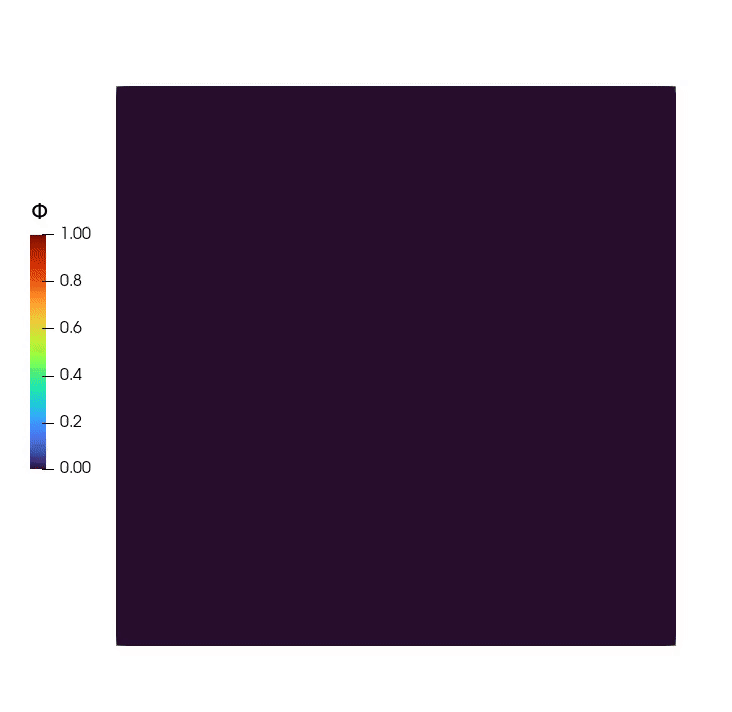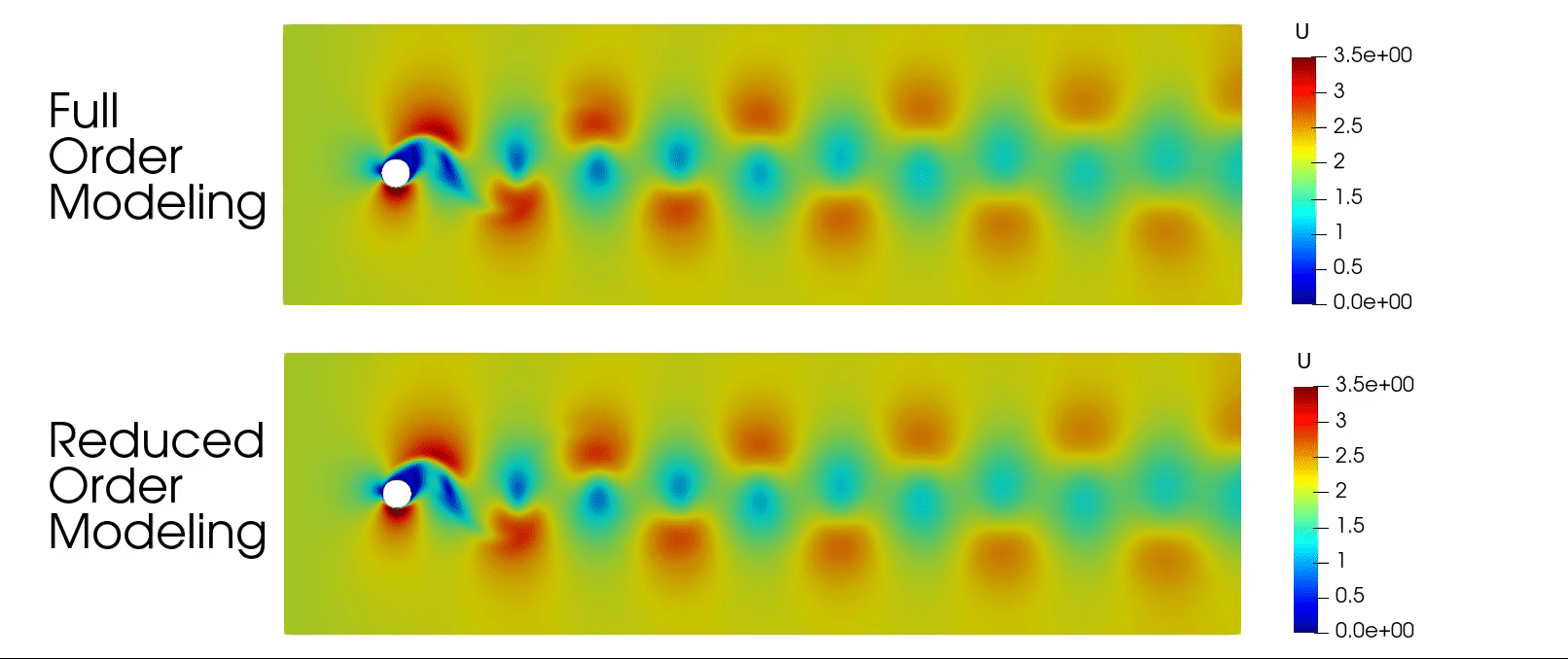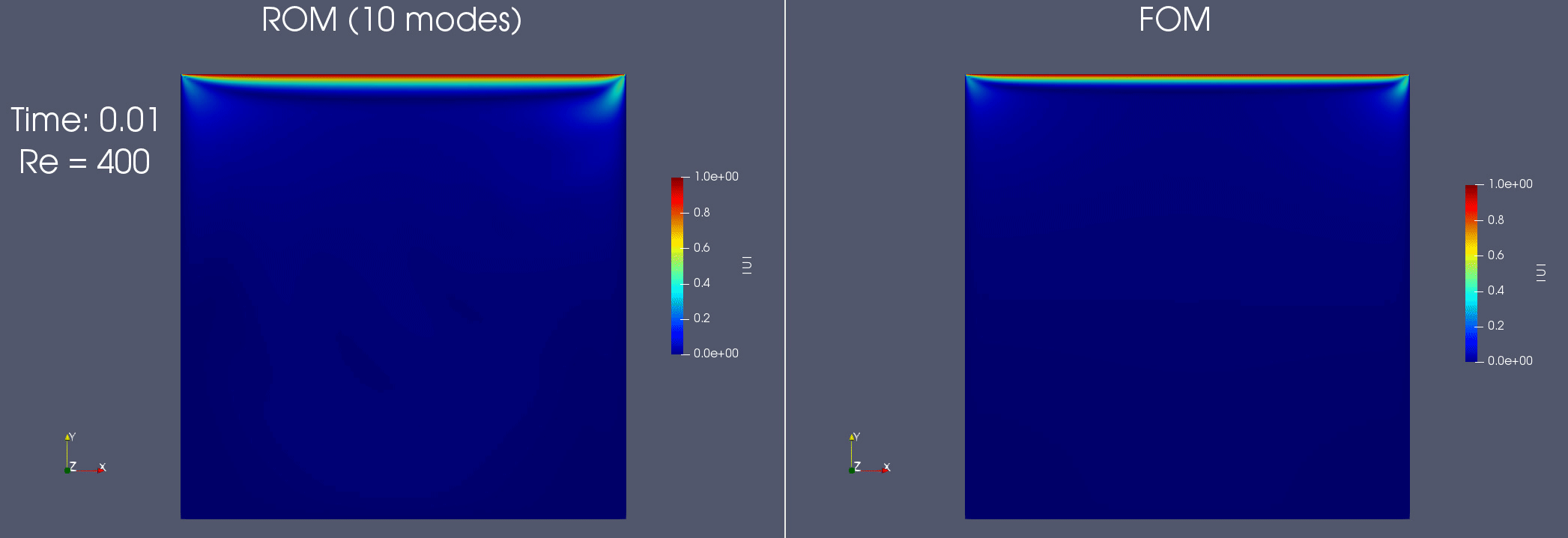Projects
Reduced order modeling for stratified flows
Full Order Modeling


Reduced Order Modeling


Reduced order modeling for incompressible flows


Discontinuous Galerkin for Compressible Euler Equations
Course: Computational Fluid Dynamics (MAE 766) Instructor: Dr. Hong Luo
📌 Problem: Solving the 2D Compressible Euler Equations for aerodynamic cases like flow around a NACA 0012 airfoil, a cylinder, and a channel with a bump using numerical methods. Traditional methods struggle with accuracy and efficiency for high-speed flows.
⚡ Challenges:
Handling hyperbolic partial differential equations accurately.
Implementing the Discontinuous Galerkin (DG) method while maintaining computational stability.
Resolving shock waves and flow separations in transonic and supersonic regimes.
🎯 Objectives Achieved:
Developed a DG-based finite volume solver using the Van-Leer flux vector splitting method.
Conducted a grid convergence study to validate results.
Successfully simulated subsonic, transonic, and supersonic flows, identifying shock locations and aerodynamic forces.
🔗 This project showcases my expertise in high-fidelity CFD methods and numerical discretization techniques. Find the full report here.
Finite Volume Method for Incompressible Navier-Stokes Equations
Course: Computational Fluid Mechanics and Heat Transfer (MAE 560) Instructor: Dr. Pramod Subbareddy
📌 Problem: Implementing a finite volume method (FVM) solver for the incompressible Navier-Stokes equations on a 2D quadrilateral mesh. The solver is validated using two benchmark problems:
Taylor-Green Vortex Decay – A test case for transient vortex dissipation.
Lid-Driven Cavity Flow – A classical problem in computational fluid dynamics (CFD).
⚡ Challenges:
Handling periodic boundary conditions for the Taylor-Green vortex problem.
Implementing the Mahesh Algorithm, a fractional step finite volume approach.
Ensuring numerical stability in the presence of high Reynolds number flows.
Achieving grid convergence and validating results with Ghia et al. (1982).
🎯 Objectives Achieved:
Developed a MATLAB-based FVM solver using structured quadrilateral grids.
Accurately simulated vortex dissipation and observed kinetic energy decay matching analytical solutions.
Modeled steady-state cavity flow, comparing results with spectral solutions from literature.
Identified limitations of explicit methods like Adams-Bashforth, highlighting trade-offs between computational cost and accuracy.
🔗 This project highlights my expertise in finite volume methods, incompressible flow solvers, and CFD benchmarking. Find the full report here.
Finite Element Program for Potential Flows
Course: Computational Fluid Dynamics (MAE 766) Instructor: Dr. Hong Luo
📌 Problem: Developing a 2D incompressible potential flow solver using the Finite Element Method (FEM) on unstructured grids. The solver is applied to two cases:
Internal flow in a channel with a bump
External flow around a cylinder
⚡ Challenges:
Implementing linear FEM for solving the Laplace equation governing potential flows.
Handling unstructured grids to model arbitrary flow domains.
Ensuring numerical convergence with mesh refinement.
🎯 Objectives Achieved:
Developed a FORTRAN-based FEM solver with Gauss-Seidel iteration for solving the Laplace equation.
Conducted a grid independence study, verifying that finer meshes led to lower numerical error.
Used Tecplot 360 for post-processing velocity potential, velocity magnitude, and vector fields.
🔗 This project demonstrates my expertise in finite element methods, numerical PDE solvers, and computational flow analysis. Find the full report here.
Discontinuous Galerkin for 1D Nonlinear Advection-Diffusion Equations
Course: Computational Fluid Dynamics (MAE 766) Instructor: Dr. Hong Luo
📌 Problem: Developing a 1D Discontinuous Galerkin (DG) solver for nonlinear advection-diffusion equations, which describe important physical transport phenomena such as heat transfer and wave propagation.
⚡ Challenges:
Implementing high-order numerical flux calculations for both diffusion (DDG formulation) and advection (upwinding method).
Handling nonlinear behavior in the advection-diffusion equation, which leads to shock wave formation.
Conducting convergence studies to verify numerical accuracy.
🎯 Objectives Achieved:
Implemented a DG(P1) solver using Taylor nodal basis functions to solve the Heat Equation and nonlinear advection-diffusion equation.
Used the Direct Discontinuous Galerkin (DDG) formulation to calculate diffusive fluxes efficiently.
Verified results by comparing numerical solutions with exact solutions and performing a convergence study.
Demonstrated how nonlinear effects cause a sine wave to evolve into a shock wave over time.
🔗 This project highlights my expertise in high-order numerical methods for PDEs, DG schemes, and nonlinear transport phenomena modeling. Find the full report here.
Not-A-Knot Cublic Spline Interpolation
Course: Computational Methods in Engineering (MAE 589) Instructor: Dr. Hong Luo
📌 Problem: Interpolating complex data points accurately using piecewise cubic polynomials. Traditional polynomial interpolation often results in Runge’s phenomenon, where oscillations occur for high-degree polynomials.
⚡ Challenges:
Ensuring smoothness and accuracy in the interpolation process.
Avoiding ill-conditioned matrices that arise in high-degree polynomial interpolation.
Applying Not-A-Knot boundary conditions for a globally smooth curve.
🎯 Objectives Achieved:
Implemented Not-A-Knot cubic spline interpolation in FORTRAN.
Validated accuracy by interpolating the Runge function and analyzing error trends.
Extended the method to parametric cubic splines, successfully interpolating a circle with 9 points.
🔗 This project highlights my skills in numerical methods, computational programming, and data approximation techniques. Find the full report here.
